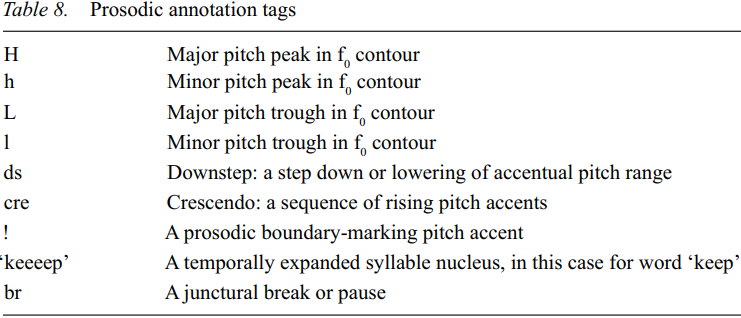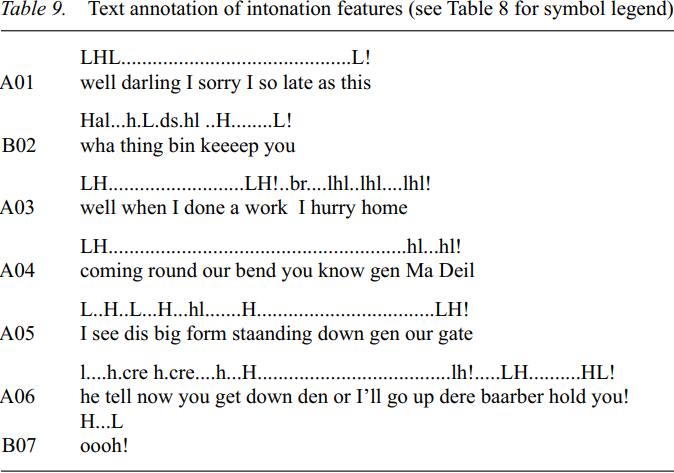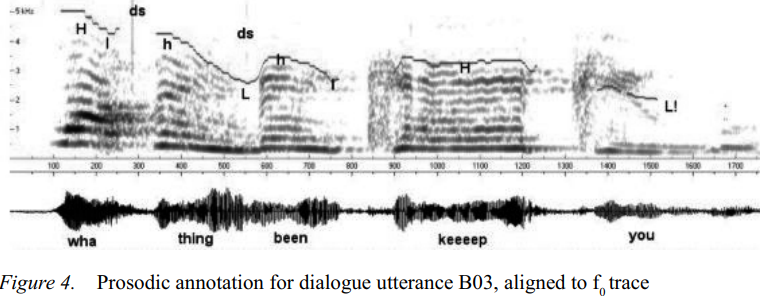


 Grammar
Grammar
 Tenses
Tenses
 Present
Present
 Past
Past
 Future
Future
 Parts Of Speech
Parts Of Speech
 Nouns
Nouns
 Verbs
Verbs
 Adverbs
Adverbs
 Adjectives
Adjectives
 Pronouns
Pronouns
 Pre Position
Pre Position
 Preposition by function
Preposition by function 
 Preposition by construction
Preposition by construction
 Conjunctions
Conjunctions
 Interjections
Interjections
 Grammar Rules
Grammar Rules
 Linguistics
Linguistics
 Semantics
Semantics
 Pragmatics
Pragmatics
 Reading Comprehension
Reading Comprehension|
Read More
Date: 2024-05-20
Date: 2024-02-17
Date: 2024-04-16
|
Traditional Norfuk speech is noted for its highly distinctive and engaging intonation, a characteristic that apparently is in danger of being lost. The Flint recordings provide a valuable record of this aspect of Norfolk speech. Our formal description of Norfuk intonation is even more partial and preliminary than that of the segmental phonology. However, the basic problem is the same: separating stylistic and idiosyncratic features of individual voices from the systemic aspects of Norfuk prosody. In the case of intonation, the task is complicated by the lack of a widely accepted descriptive framework. We have adopted what might be called a ‘simplified Pierrehumbert-Beckman’ set of descriptive tags, aiming to annotate the major pitch and temporal features of the intonation contour.
The present system aims to represent local peaks and troughs as well as the overall shape of the fundamental frequency contour, pause breaks, and regions of slowed speech delivery. The main features of the annotation are illustrated in Table 8. Table 9 illustrates the text annotation of several utterances and Figures 4 and 5 illustrate how the tags are applied to the speech signal of selected utterances. Conversational Norfuk seems to an English ear to employ a wide pitch range with much expressive highlighting achieved by local changes of pitch and voice tempo. The use of temporally expanded vowels in accented syllables, or local reductions in speech tempo, is a distinctive feature of Norfuk prosody, illustrated in the second sentence of the text annotation (Table 9) and the speech signal (Figure 4).



The word keep achieves accentual prominence by the exaggerated length of the vowel nucleus. The interrogative expression as a whole achieves illocutionary force by starting close to the top of the speaker’s pitch range, with successive accented syllables down-stepped to the nuclear accent on the verb. There is substantial pre-pausal lengthening on you, as part of the phrase-final boundary tone. But we have not annotated this feature, because it is a ubiquitous prosodic cue to phrase-final position in English and many other languages.
Down-stepping of accented syllables within the phrase in B03 may simply be a consequence of starting at the top of the speaker’s pitch range and may have no particular pragmatic significance. However, the complementary effect on the pitch contour labelled ‘crescendo’ here, a succession of up-stepping accents leading to a nuclear ‘hat’ accent on barber hold in utterance A06, does seem to carry mimetic meaning as direct reported speech, mimicking the agitated state of speaker.

The translation for this sentence that Flint gives is ‘He said now you get down here or I’ll go up there and give you a good hiding.’ We guess the expression barber hold refers to the leather strap that barbers used to sharpen razors.
It is an open question whether mimetic features of intonation observed in reported speech dialogue should be regarded as part of Norfuk prosody or treated as ‘paralinguistic’ (i.e. as part of an individual speaker’s capacity for expressive elaboration or embellishment of a narrative). Our analysis of Norfuk prosody is in its infancy and these kinds of questions require more data analysis.
|
|
|
|
التوتر والسرطان.. علماء يحذرون من "صلة خطيرة"
|
|
|
|
|
|
|
مرآة السيارة: مدى دقة عكسها للصورة الصحيحة
|
|
|
|
|
|
|
نحو شراكة وطنية متكاملة.. الأمين العام للعتبة الحسينية يبحث مع وكيل وزارة الخارجية آفاق التعاون المؤسسي
|
|
|